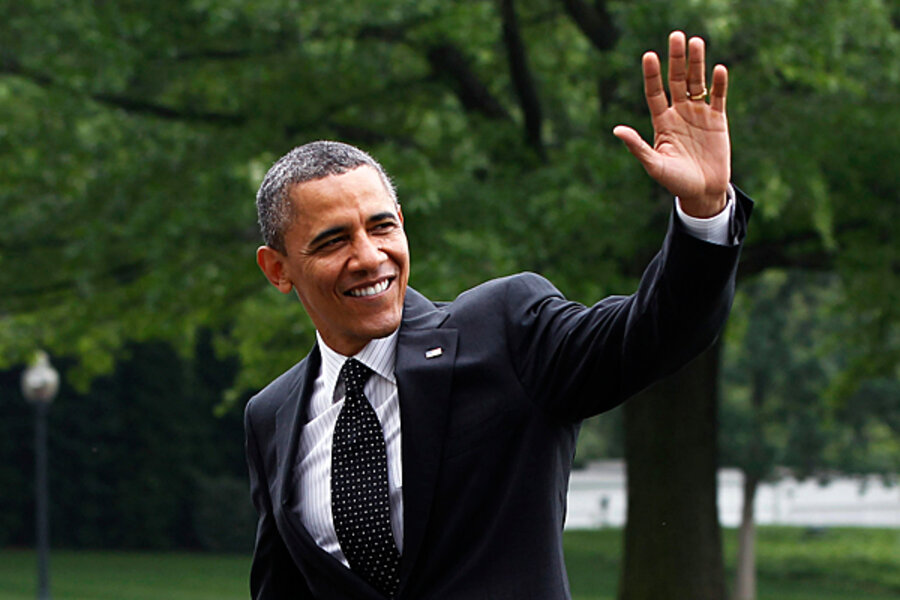Obama's ex-girlfriend: what her diaries reveal
Loading...
| Washington
It could be anybody’s worst nightmare: The diary of an ex-girlfriend or boyfriend suddenly comes to light in a very public way, available for all the world to read.
But for President Obama, whose ex-flame Genevieve Cook comes to life via her private writings in a new biography of the president, the window into the young Mr. Obama may be a plus.
Obama already has a cool image that the Romney campaign is trying to counter. Ms. Cook’s thoughts from the mid-80s, when she and the future president were in a relationship, may only add to that mystique. In her journals, she describes a thoughtful young man, at times emotionally distant, trying to sort through his racial identity and chart an ambitious future.
She also paints a picture full of images and scents that may shout TMI – Too Much Information – but given the buzz around the book, it’s clear the public is interested.
An example: “I open the door, that Barack keeps closed, to his room, and enter into a warm, private space pervaded by a mixture of smells that so strongly speak of his presence, his liveliness, his habits – running sweat, Brut spray deodorant, smoking, eating raisins, sleeping, breathing.”
Cook’s words come to us via Pulitzer Prize-winning journalist David Maraniss, whose book “Barack Obama: The Story” comes out in June. Mr. Maraniss interviewed both Cook, the daughter of an Australian diplomat, and the president for his portrait, but it’s Cook’s impressions of her boyfriend starting in late 1983, when their relationship began, that add texture to the young Obama already revealed in his memoir, “Dreams From My Father.”
An excerpt of the book appears in the June issue of Vanity Fair, which is just hitting newsstands but already available online.
In his interview with Cook, Maraniss writes, “she remembered how on Sundays Obama would lounge around, drinking coffee and solving the New York Times crossword puzzle, bare-chested, wearing a blue and white sarong.”
But Cook also sensed that something was missing.
“The sexual warmth is definitely there – but the rest of it has sharp edges and I’m finding it all unsettling and finding myself wanting to withdraw from it all,” Cook wrote in her journal on Feb. 25, 1984. “I have to admit that I am feeling anger at him for some reason, multi-stranded reasons. His warmth can be deceptive. Tho he speaks sweet words and can be open and trusting, there is also that coolness – and I begin to have an inkling of some things about him that could get to me.”
Maraniss writes: “When she told him that she loved him, his response was not ‘I love you, too’ but ‘thank you’ – as though he appreciated that someone loved him.”
Cook is white, and she came to realize that the mixed-race Obama “needed to go black.” She also foresaw a mate for him that is almost eerily prescient.
“I can’t help thinking that what he would really want, be powerfully drawn to, was a woman, very strong, very upright, a fighter, a laugher, well-experienced – a black woman I keep seeing her as,” Cook wrote in her diary.
Obama loved Cook – he says so in his memoir, though without mentioning her name. The president has had to answer for the fact that in “Dreams From My Father,” some scenes involving his “New York girlfriend” were in fact drawn from more than one girlfriend. But, as has been reaffirmed, he did explain in the introduction to every edition of the book that he had combined girlfriends into a composite character to simplify the narrative.
That’s a mere bump in the road. The real takeaway from the excerpt published in Vanity Fair is that Obama was already becoming the man we see today – the reserve, the intellect, the striving. And even if reading about the 22-year-old future president’s choice of deodorant seems undignified, we can be sure of this: A tell-all by a former girlfriend could have been a whole lot worse.







